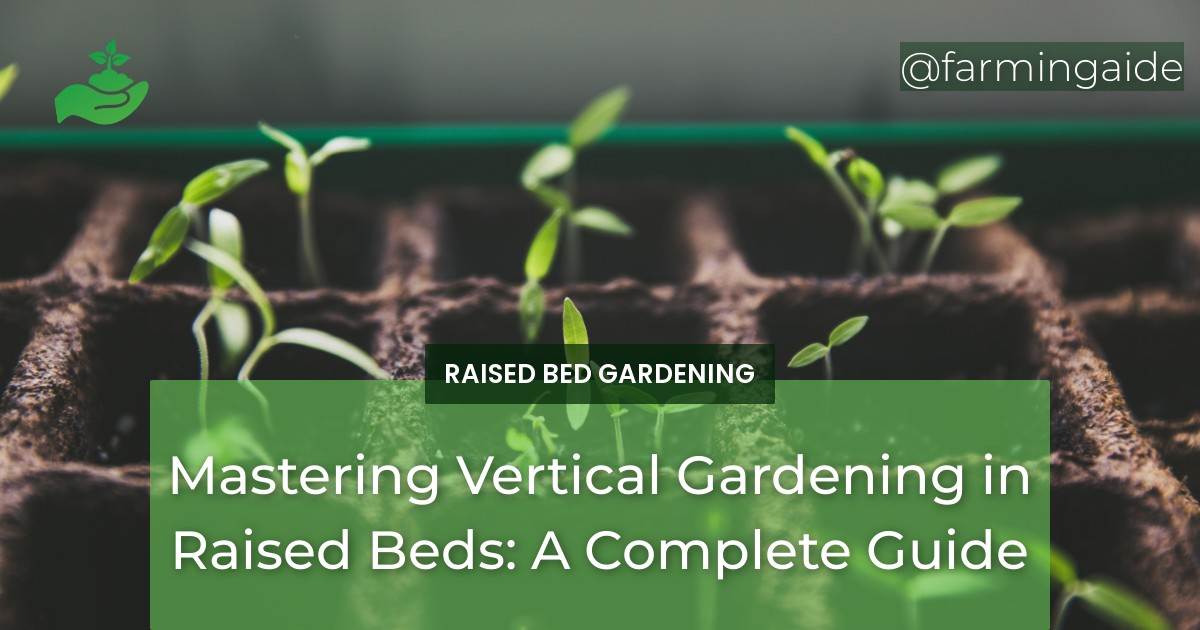Vertical gardening is a unique way to maximize space while also providing a visually appealing garden. It involves growing plants upwards instead of outwards, which makes it an excellent choice for raised bed gardening. Vertical gardening structures can be created using a variety of materials, including wood, metal, concrete, and plastic. When designing and constructing these structures, location, materials, frame, supporting structures, and irrigation must all be considered.
Table of Contents
Benefits of Vertical Gardening in Raised Beds
Vertical gardening in raised beds offers a wide range of benefits for gardeners. These include:
- Maximizing small spaces by utilizing vertical space
- Improving drainage and aeration for plants
- Reducing soil erosion
- Allowing easy access to plants
- Providing a unique visual appeal to gardens
With these benefits, it’s no wonder why vertical gardening in raised beds is becoming increasingly popular among both novice and experienced gardeners.
ALSO READ
Suitable Plants for Vertical Gardening
When it comes to vertical gardening in raised beds, there are several types of plants that are suitable for this type of gardening. These include:
- Vining vegetables such as tomatoes, cucumbers, and beans
- Climbing flowers like morning glory, clematis, and honeysuckle
- Herbs such as basil, rosemary, and thyme
- Succulents including jade plants, echeveria, and aloe vera
- Berries such as blackberries, strawberries, and raspberries
Before choosing plants for your vertical garden, ensure that they are suitable for the amount of sunlight, wind, and temperature in your area.
Designing and Constructing Vertical Structures
Designing and constructing vertical structures for raised bed gardening requires careful planning and execution. Here are some tips:
- Choosing the right location that receives enough sunlight and is easily accessible for watering and maintenance
- Selecting materials that are durable and can withstand outdoor elements
- Building a sturdy frame that can support the weight of the plants and soil
- Adding supporting structures such as trellises, cages, and stakes to help support the plants
- Installing irrigation to ensure that plants receive adequate water
When constructing a vertical structure, it’s essential to ensure that it’s secure and stable to prevent it from collapsing or tipping over.
Maintenance Tips for Vertical Gardens in Raised Beds
Maintaining a vertical garden in a raised bed requires regular care and attention. Here are some tips to keep in mind:
- Watering plants regularly to ensure that they receive enough moisture
- Fertilizing plants properly to provide them with essential nutrients
- Pruning and training plants to maintain their shape and encourage growth
- Monitoring for pests and diseases to prevent damage to plants
- Replenishing soil as needed to ensure that plants have adequate nutrients
By following these maintenance tips, you can keep your vertical garden healthy and thriving.
ALSO READ
Choosing the Right Raised Bed for Vertical Gardening
When it comes to raised bed gardening, there are several materials to consider when choosing the right raised bed for vertical gardening. These include:
- Wooden raised beds that are affordable and easy to customize
- Metal raised beds that are durable and can withstand outdoor elements
- Concrete raised beds that are long-lasting and low-maintenance
- Plastic raised beds that are lightweight and easy to move
Before choosing a raised bed, consider your budget, the size of your garden, and the type of plants you want to grow.
Vertical Gardening Ideas for Raised Beds
There are several vertical gardening ideas that you can incorporate into your raised bed garden:
- Hanging planters that can be hung from a trellis or fence
- Trellis systems that can be used to support vining vegetables and climbing flowers
- Tiered structures that allow you to grow plants at different heights
- Living walls that can be created using a variety of plants
- Stacked containers that allow you to grow multiple plants in a small space
By incorporating these ideas into your raised bed garden, you can create a unique and visually appealing vertical garden.
Conclusion
Vertical gardening in raised beds is an excellent way to maximize space and create a visually appealing garden. By choosing suitable plants, designing and constructing vertical structures, and following maintenance tips, you can create a healthy and thriving garden. With the right raised bed and vertical gardening ideas, you can create a unique and functional garden that will bring joy and satisfaction for years to come.
RELATED ARTICLES:


